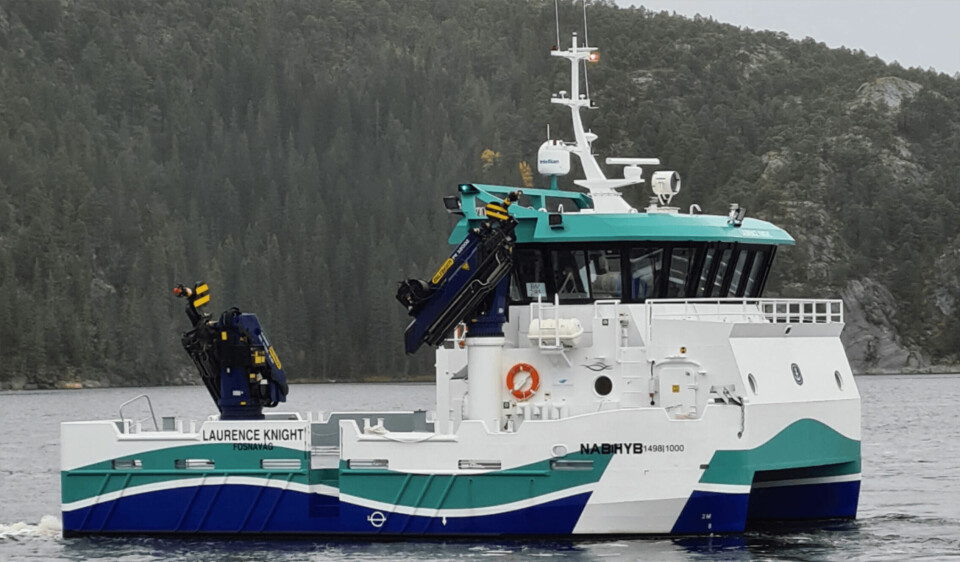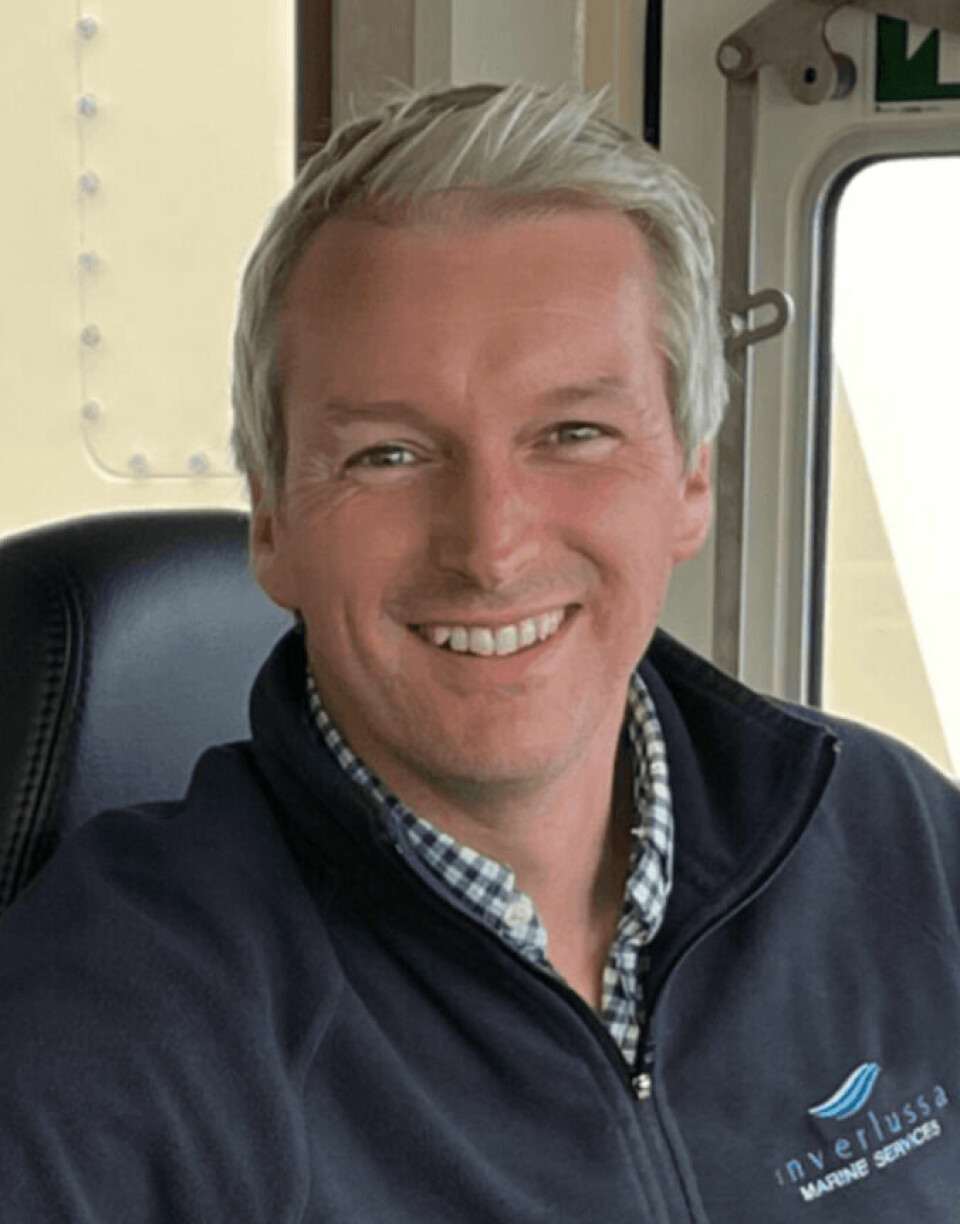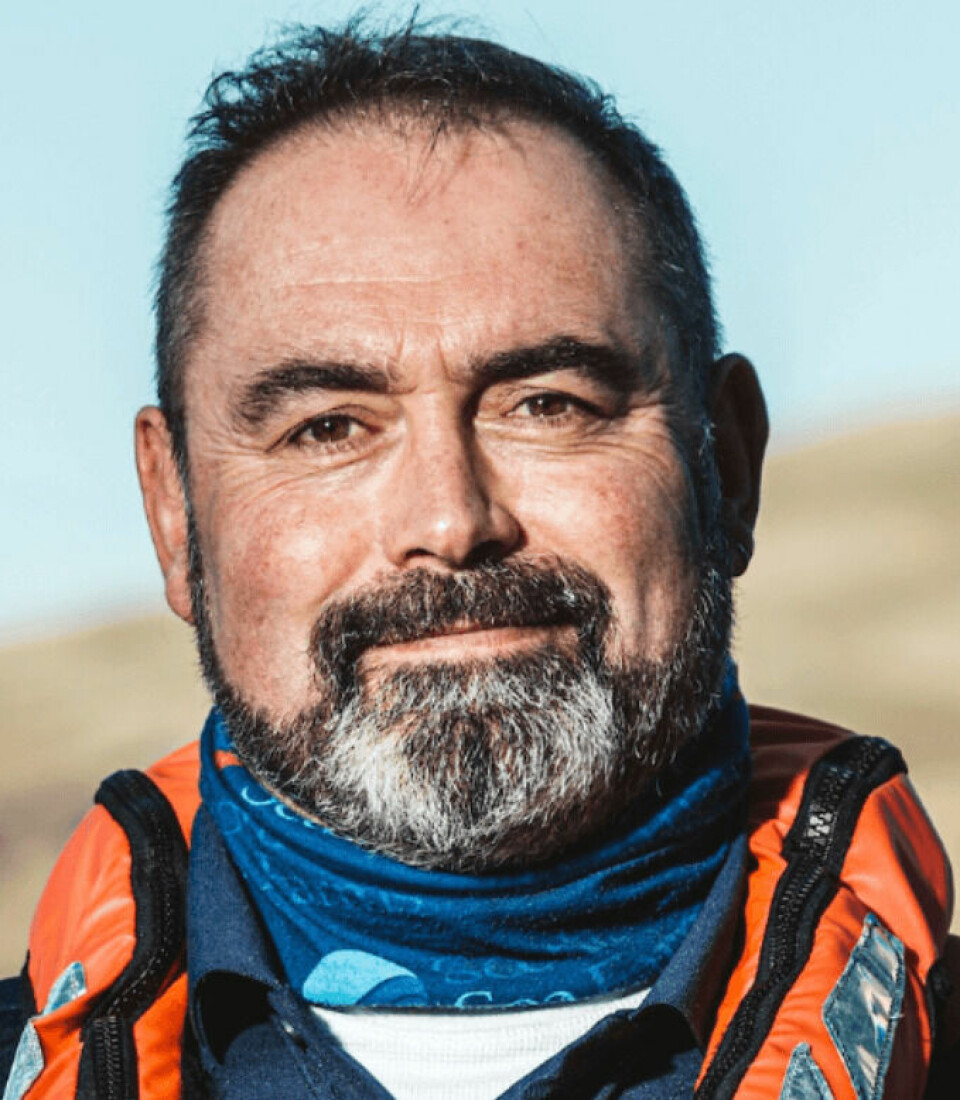
SSF receives Scotland’s first hybrid power fish farm workboat
Salmon farmer Scottish Sea Farms (SSF) has taken delivery of a hybrid power workboat, the first vessel of its kind to be used in Scotland’s aquaculture sector.
The 15-metre catamaran, Laurence Knight, was commissioned by Mull-based Inverlussa Marine Services from Norwegian yard Moen Marin and goes into service this month on Scotland’s west coast.
The boat, which will run primarily on its batteries, marks a “massive milestone” in both carbon reduction and cost savings, said Inverlussa managing director Ben Wilson.

“There are similar hybrid vessels in Norway and we thought it was the right time to introduce this technology to our Scottish customers, who are committed to lowering their environmental impact,” he said in a press release from SSF.
5-6 hour capacity
The boat can perform on-farm duties for five to six hours without recharging its batteries from either of the two generators on board.
This means the generators do not need to be running when the boat is tied up alongside a salmon pen, assisting with a harvest or a net installation, for instance.
And with no demand for an overnight generator, noise will be reduced, as well as diesel fuel consumption and the vessel’s carbon footprint.
CO₂ and fuel cost savings
For SSF, the new vessel will help achieve CO₂ savings of around 234 tonnes a year, as well as potentially cut fuel costs by up to 50%.
The batteries, with a total capacity of 244kW hours, can power cranes and all other energy requirements, including propulsion back and forth from the shore. As soon they need recharging, the generators kick in automatically, and they can also be recharged with shore power.
Data can be collected from the batteries for analysis back on shore, and the technology allows SSF to manage every individual cell within the battery pack to get the most efficient use out of it.
The batteries have a typical life expectancy of 16 years and are completely recyclable. Another eco-friendly feature of the catamaran is that the water used to cool the batteries is recycled to help heat the four cabins.

SSF’s regional director for the mainland, Innes Weir, said the boat will instil confidence in the future of hybrid technology across the business.
A hybrid power trial currently running on the feed barge at the company’s Spelve farm on Mull has “opened the door”, said Weir, saving around 83 tonnes of CO₂ a year at its peak and showing how the technology can work. But the new workboat goes further.
Hybrid roll-out
“The system we have at Spelve is to pick up anything other than feeding fish. As soon as we need to feed, we turn the generator on,” explained Weir.
“If we can operate a hybrid system that is completely electric, with generators just used for recharging batteries, we can roll it out across our estate, on the barges and other energy rich areas we want to hybridise.”
The Laurence Knight brings Inverlussa’s fleet up to 17 vessels and five new jobs have been created to crew the boat in shift patterns.
One for the boys
Wilson said: “I think this type of vessel is going to become more common in the Scottish salmon farming sector as producers look for greener solutions. It’s an exciting project and we’re looking forward to getting it going.”
The catamaran continues Inverlussa’s tradition of naming vessels after Wilson’s relatives but is the first to be named after a male, Wilson’s nephew. The Inverlussa boss said he was inspired to do something new because of the hybrid power made the boat different.























































